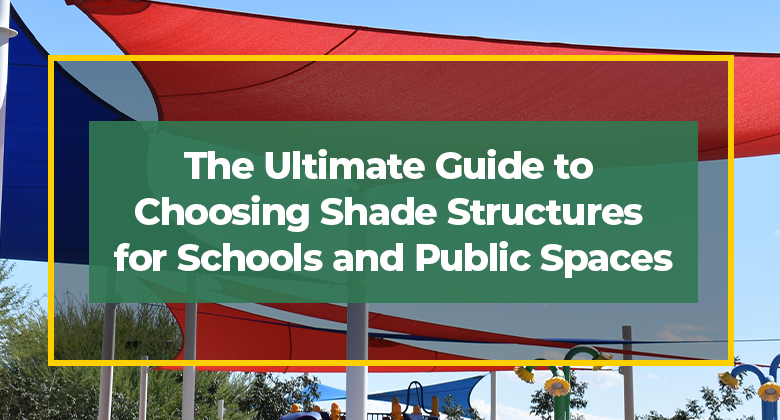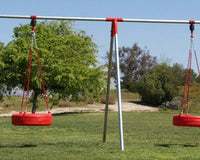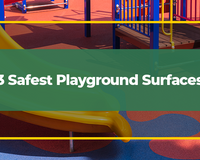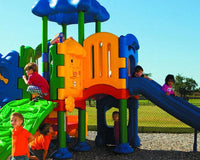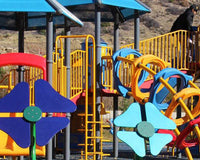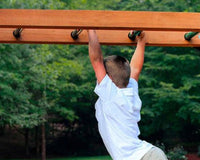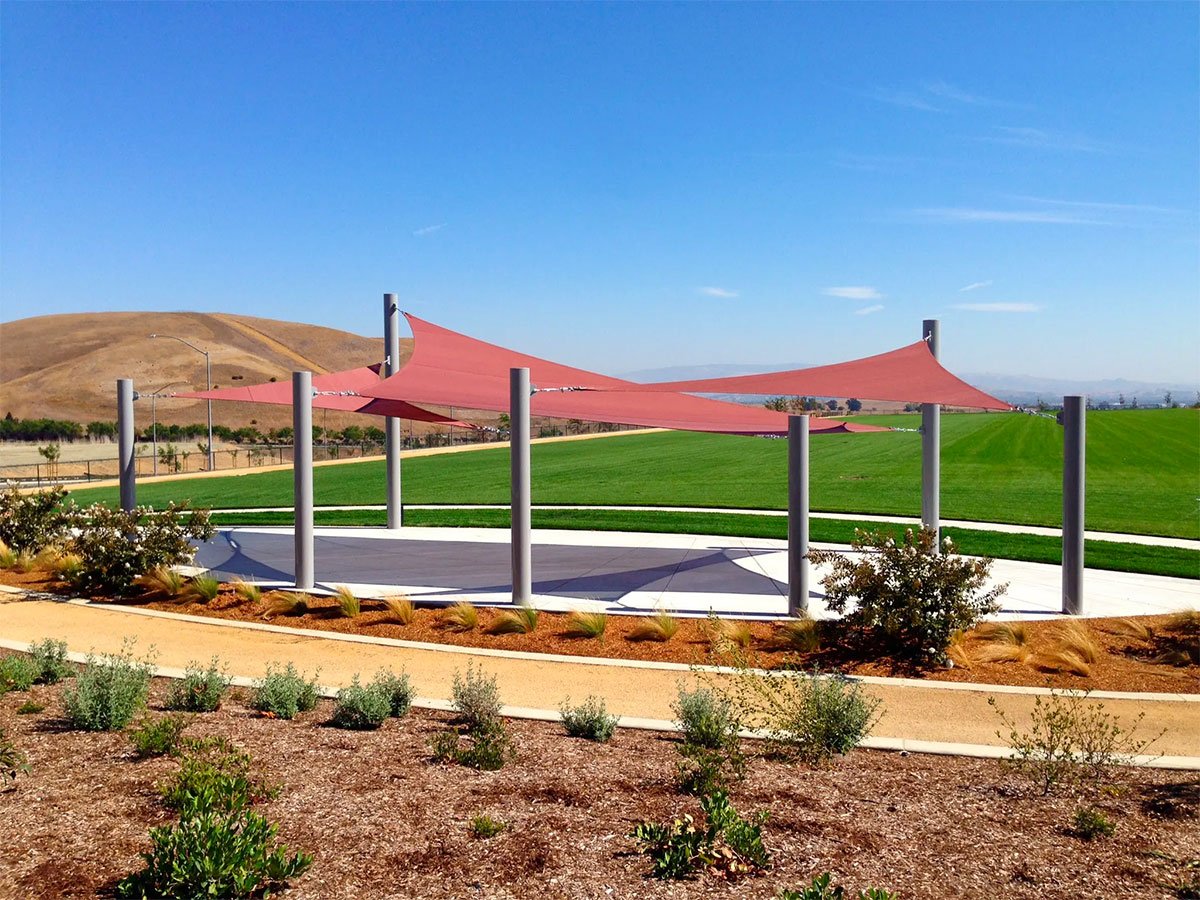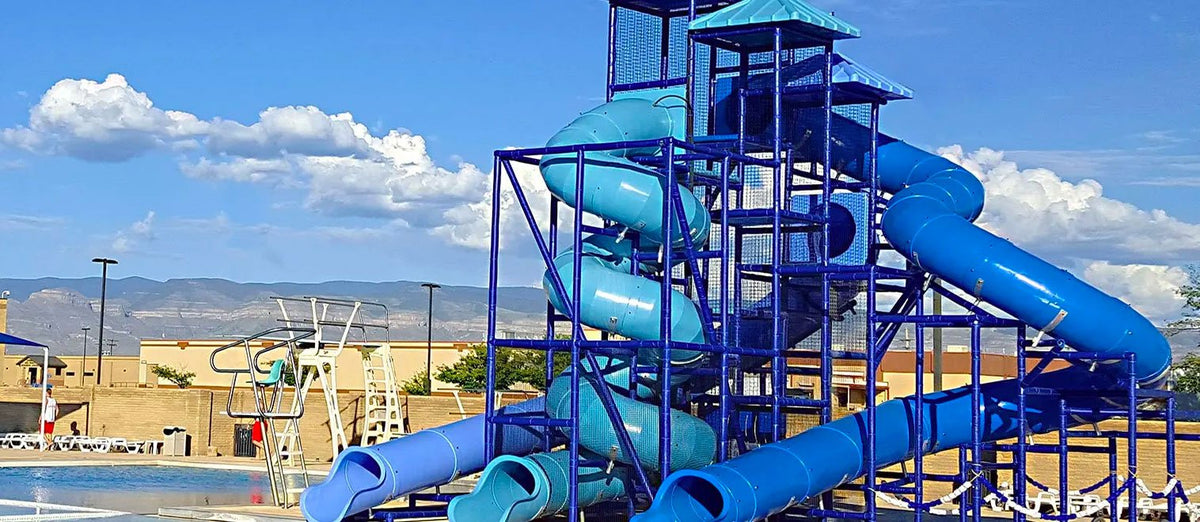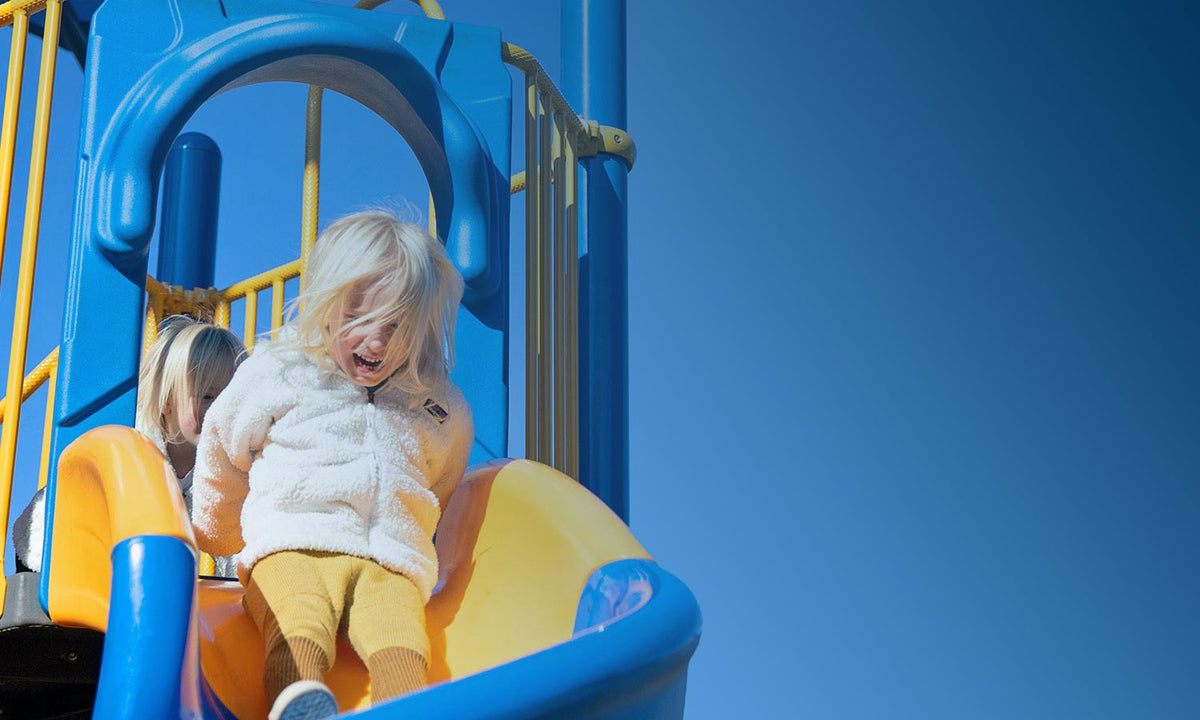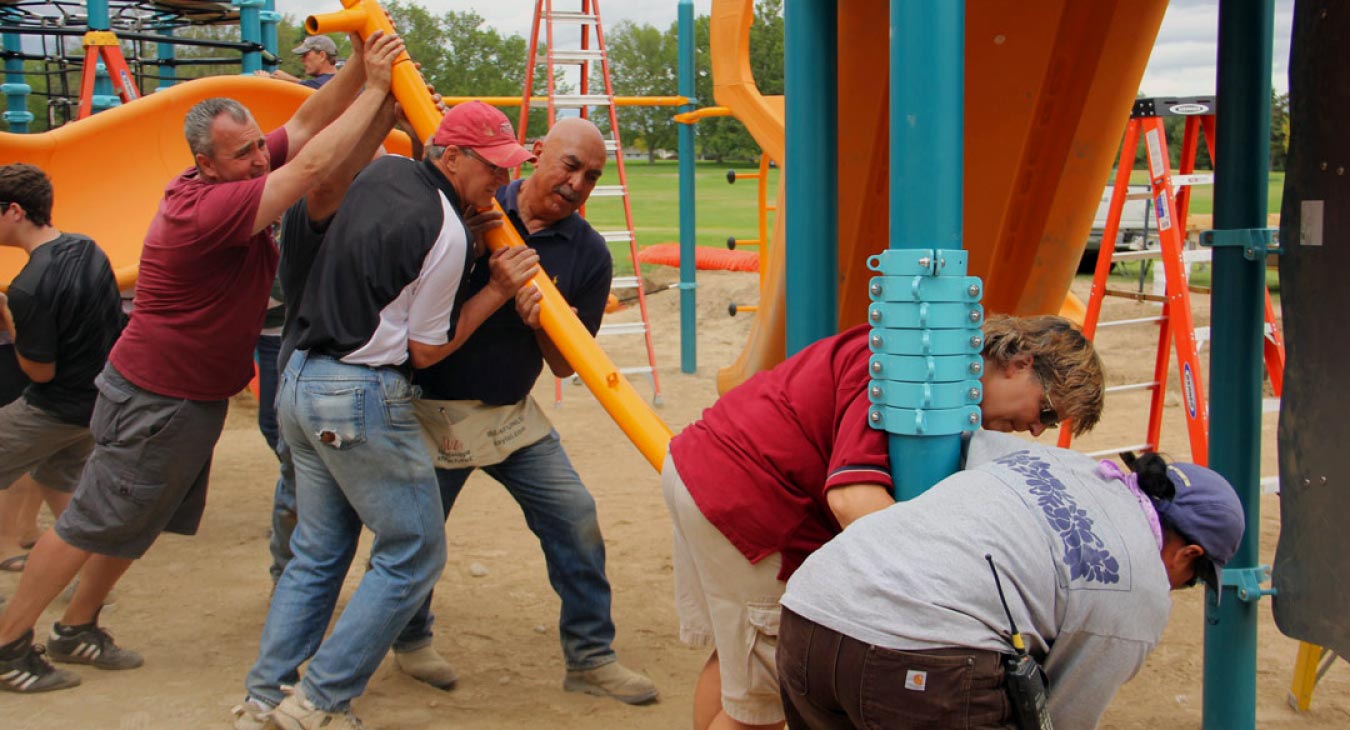Whether you're looking to create a cool hangout spot for students or a comfortable retreat in a bustling park, this guide will help you make the best choice.
We'll walk you through everything you need to know about outdoor shade structures, from materials and design to safety and cost, ensuring you find the perfect shade solution that fits your needs and budget.
What Are the Benefits of Commercial Shade Structures?
Commercial shade structures play a vital role in creating safer, more enjoyable environments in schools and public spaces. Exposure to direct sunlight can lead to heat exhaustion, sunburns, and long-term skin damage, making shaded areas essential for outdoor learning, recreation, and relaxation.
Well-designed shade solutions provide relief from harsh weather conditions and enhance the usability and visual appeal of any space. Whether installed over commercial playgrounds, seating areas, or sports facilities, commercial shade structures offer numerous benefits that improve safety and comfort.
These benefits are increasingly important as communities look for ways to balance children's rising screen time with outdoor activity.
Sun Protection
Outdoor shade structures act as a barrier against the sun's harmful UV rays, significantly reducing the risk of sunburn and heat-related illnesses. This is especially important for children, who have sensitive skin and often spend extended periods outdoors engaging in outdoor play during early childhood development.
Enhanced Comfort
By blocking sunlight, commercial shade structures create cooler spaces where students, teachers, and visitors can gather comfortably. Whether used for outdoor classrooms, lunch breaks, or community events, shaded areas encourage outdoor engagement even on hot days.
Temperature Control
These structures help regulate temperatures by reducing heat absorption in surrounding surfaces like asphalt, concrete, and outdoor equipment. Cooler play spaces and seating zones make outdoor activities more enjoyable while preventing surfaces from becoming dangerously hot.
Versatility and Functionality
Outdoor shade structures can be adapted to different needs, from covering playgrounds and sports courts to protecting picnic areas, walkways, or bus stops. Their flexibility makes them a valuable addition to various outdoor spaces.
Aesthetic Appeal
Available in a wide range of sizes, shapes, colors, and materials, shade structures can complement existing architecture and landscaping. Whether designed with sleek modern elements or vibrant, playful styles, they add visual interest and enhance the overall atmosphere.
Investing in high-quality outdoor shade structures contributes to the well-being of students, teachers, and the wider community. By reducing health risks and improving comfort, they make outdoor spaces more functional and inviting all year round.

How to Choose the Right Type of Shade Structure
Selecting the right commercial shade structure for schools and public areas requires thoughtful planning to ensure safety, durability, and functionality. A well-chosen structure not only provides effective sun protection but also enhances the space’s usability and aesthetic appeal.
Understanding key factors will help make an informed decision about a school playground shade, outdoor learning area, or public gathering space that meets immediate and long-term needs.
Define the Purpose
Identify how the shade structure will be used. Will it cover a playground to protect children during recess, provide shelter for outdoor classes, or offer shade for seating areas? The primary function determines the size, shape, and type of structure needed.
Assess the Available Space
Measure the designated area and consider nearby features such as existing buildings, trees, poles, or pathways. Understanding spatial limitations ensures the structure fits seamlessly without obstructing movement or visibility.
Consider Local Climate
Choose materials and designs suited to the region’s weather conditions. UV-resistant fabrics are crucial in areas with strong sun exposure. Sturdier structures with reinforced support systems are essential for locations prone to heavy rain, wind, or snowfall.
Ensure Compliance with Regulations
Check local building codes, zoning laws, and safety requirements before installation. Schools and public spaces often have strict guidelines to ensure proper anchoring, fire resistance, and durability, making compliance a necessary step in the process.
Plan for Year-Round Use
If the space is used throughout the year, opt for adjustable or removable shade structures that adapt to changing seasons. Some structures come with retractable canopies or modular designs, allowing flexibility depending on weather conditions.
Choosing the right commercial shade structure is an investment in safety, comfort, and functionality. By carefully evaluating these factors, schools and public spaces can ensure that their shade solutions provide long-term benefits, creating inviting outdoor venues that encourage learning, play, and community engagement.
Heat Reflection Hack: Lighter-colored shade materials reflect more sunlight, keeping shaded areas even cooler compared to darker fabrics or metals.
>
Types of Shade Structures
Choosing the right type of shade structure depends on the space's specific needs, including durability, flexibility, and visual appeal. Each type offers unique advantages suited to different environments.
Permanent Structures
Permanent school or playground shade structures are built using durable materials like metal, wood, or concrete, providing long-term protection and stability.
Ideal for:
- High-traffic areas such as school playgrounds and public parks
- Locations needing year-round, reliable sun shading
- Low-maintenance solutions that withstand harsh weather
Temporary Structures
Designed for flexibility, temporary school or playground shade structures can be easily assembled, disassembled, or relocated, making them ideal for short-term or seasonal use.
Ideal for:
- Outdoor events, fairs, and temporary school activities
- Spaces requiring quick and adaptable shade solutions
- Areas with changing layouts or seasonal needs
Canopies
Shade canopies provide wide, continuous coverage, making them perfect as playground shade structures and/or for seating areas and event spaces.
Ideal for:
- Large open areas such as schoolyards and picnic zones
- Permanent installations that require broad shade coverage
- Spaces needing UV-resistant, weatherproof protection
Sail Shades
Sail shades, like playground shade sails, feature tensioned fabric arranged in artistic, overlapping configurations, creating a visually striking and functional shade solution.
Ideal for:
- Modern, stylish outdoor spaces that need versatile coverage
- Areas where airflow and partial sunlight are beneficial
- Schools and parks looking for an eye-catching shade design
Pergolas
Pergolas are open-framed structures, often made of wood or metal, that offer partial shade while adding aesthetic value to outdoor environments.
Ideal for:
- Walkways, courtyards, and outdoor seating areas
- Schools and public spaces wanting a decorative yet functional shade option
- Areas that can be enhanced with climbing plants or retractable covers
Retractable Structures
Retractable school or playground shade structures provide adjustable coverage, allowing users to extend or retract the shade based on weather conditions and personal preference.
Ideal for:
- Multi-purpose spaces requiring adjustable sun protection
- Cafeteria patios, school sports areas, and open-air classrooms
- Locations needing manual or motorized shading flexibility
Selecting the right shade structure depends on the specific needs of a school or public space. Whether prioritizing durability, design, or adaptability, each option offers unique benefits that enhance outdoor areas' comfort, functionality, and visual appeal.

Pros and Cons of Various Materials
Choosing the right material for shade structures is crucial for durability, maintenance, and overall aesthetics. Each material has unique advantages and drawbacks, so factors like climate, maintenance requirements, and budget should be considered.
Wood
Wood offers a timeless, natural aesthetic that blends well with outdoor environments. It can be customized into various designs, making it a popular choice for pergolas and traditional shade structures.
Pros:
- Warm, natural appearance that enhances any landscape
- Highly customizable with different stains, finishes, and styles
- Provides solid structural strength when properly maintained
Cons:
- Requires regular maintenance, including sealing, staining, or painting
- Susceptible to rot, insect damage, and weathering over time
- Can be more expensive long-term due to upkeep costs
Metal
Often made from aluminum or steel, metal structures provide strength and durability while requiring minimal maintenance. They are commonly used in permanent shade installations.
Pros:
- Highly durable and long lasting, ideal for permanent structures
- Low maintenance with resistance to pests and decay
- The modern aesthetic that complements contemporary designs
Cons:
- It can retain heat, making shaded areas warmer in direct sunlight
- Susceptible to rust if not properly coated or maintained
- Heavier and may require professional installation
Fabric
Fabric shade structures, such as shade sails and playground shade canopies, provide lightweight and flexible sun protection, making them a cost-effective option for temporary and adaptable installations.
Pros:
- Excellent protection from sun’s harmful UV rays, reducing excessive heat and sun exposure
- Lightweight, easy to install, and available in various colors and designs
- Provides breathability, allowing airflow for added comfort
Cons:
- Shorter lifespan compared to rigid materials, prone to wear and tear
- Can be affected by strong winds and extreme weather conditions
- Requires occasional cleaning and replacement over time
PVC
PVC is a synthetic material known for its moisture resistance and low maintenance. It is often used in modern playground shade structures for its durability and affordability.
Pros:
- Resistant to moisture, mold, and mildew, making it ideal for humid climates
- Low maintenance and easy to clean
- Affordable compared to other materials
Cons:
- Limited design flexibility compared to wood shelters or fabric structures
- Can weaken or crack over time under extreme weather conditions
- Not as visually appealing as natural materials like wood or composite
Composite
Composite materials combine wood fibers and plastic to create a durable, low-maintenance alternative to traditional wood. It offers the best of both worlds in terms of aesthetics and longevity.
Pros:
- Natural wood-like appearance without the extensive maintenance
- Resistant to rot, insects, and extreme weather conditions
- Long-lasting and durable, making it a cost-effective investment
Cons:
- Higher initial cost compared to traditional wood or fabric
- Limited customization options compared to real wood
- Can retain heat under direct sunlight
Selecting the right material depends on factors like budget, aesthetics, maintenance requirements, and climate conditions. Each material brings unique benefits, so balancing durability, visual appeal, and practicality will help ensure the best choice for a school or public space.
Multi-Purpose Shade: Some modern playground shade structures can be designed to double as rain shelters, making them useful year-round in unpredictable weather.
Integration into School and Public Space Design
When integrating commercial shade structures into outdoor environments, like outdoor dining areas, consider these aesthetic factors:
- Color and material selection to complement the surroundings
- Design and shape that align with the intended aesthetic
- Seamless integration with the landscape
- Incorporation of lighting for ambiance
- Cultural and community relevance
- Flexibility for future modifications
How do playgrounds help the community? By incorporating shaded play and gathering areas, schools and public spaces become more inclusive, encourage social interaction, and support healthier outdoor lifestyles. Shade structures not only enhance comfort but also contribute to creating environments where people of all ages feel welcome and engaged.
Customization options for shade structures include:
- Choice of materials (fabric, metal, wood)
- Branding elements (colors, logos, unique designs)
- Technology integration (solar panels, LED lighting, smart controls)
- Multi-functional designs for versatility
- Future-proofing for potential expansions or changes
By thoughtfully incorporating shade structures into the overall design of schools and public spaces, they can serve as both functional and visually appealing elements. A well-planned approach ensures they not only provide comfort and sun protection but also enhance the environment, reinforce branding, and support the community's long-term needs.
With customization and future-proofing in mind, shade structures can evolve alongside the spaces they serve, maximizing their value for years to come.
Investing in Shade for a More Enjoyable Space
Choosing the right shade structure for schools and public areas involves balancing function, style, and budget. By considering factors like material, design, and maintenance, you can create safe and comfortable outdoor environments that enhance any area.
Remember, the right shade structure protects and adds a touch of style to your space. Explore your options and make a choice that will keep everyone cool and happy for years to come!


